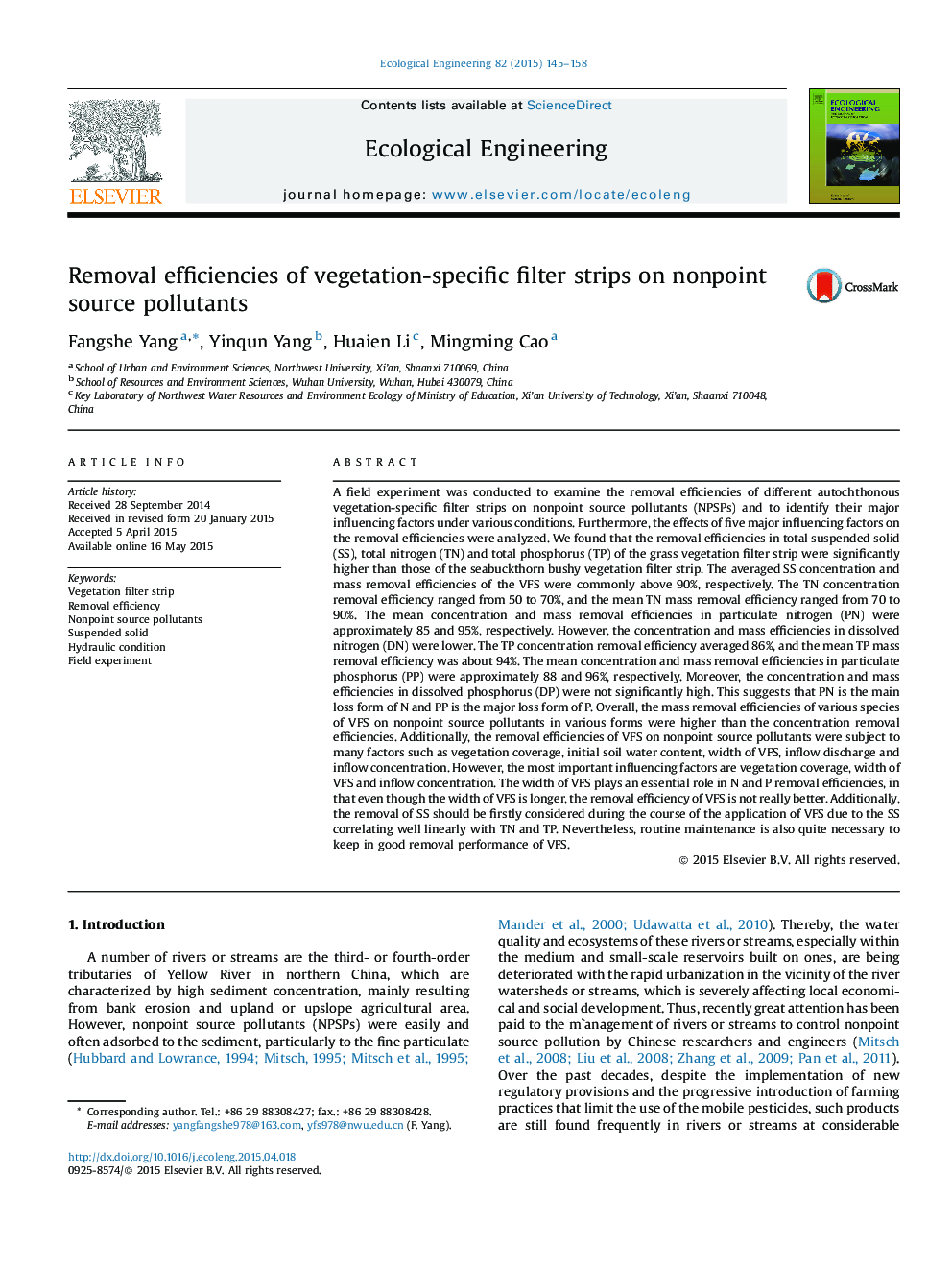| کد مقاله | کد نشریه | سال انتشار | مقاله انگلیسی | نسخه تمام متن |
|---|---|---|---|---|
| 4388958 | 1618017 | 2015 | 14 صفحه PDF | دانلود رایگان |
• We examine the removal efficacies of vegetation-specific filter strips on NPSP.
• We identify the major impacting factors under various conditions.
• We test the role of both vegetation coverage and width of VFS in N and P removal.
• We analyze the significant role of SS in N and P removal processes.
A field experiment was conducted to examine the removal efficiencies of different autochthonous vegetation-specific filter strips on nonpoint source pollutants (NPSPs) and to identify their major influencing factors under various conditions. Furthermore, the effects of five major influencing factors on the removal efficiencies were analyzed. We found that the removal efficiencies in total suspended solid (SS), total nitrogen (TN) and total phosphorus (TP) of the grass vegetation filter strip were significantly higher than those of the seabuckthorn bushy vegetation filter strip. The averaged SS concentration and mass removal efficiencies of the VFS were commonly above 90%, respectively. The TN concentration removal efficiency ranged from 50 to 70%, and the mean TN mass removal efficiency ranged from 70 to 90%. The mean concentration and mass removal efficiencies in particulate nitrogen (PN) were approximately 85 and 95%, respectively. However, the concentration and mass efficiencies in dissolved nitrogen (DN) were lower. The TP concentration removal efficiency averaged 86%, and the mean TP mass removal efficiency was about 94%. The mean concentration and mass removal efficiencies in particulate phosphorus (PP) were approximately 88 and 96%, respectively. Moreover, the concentration and mass efficiencies in dissolved phosphorus (DP) were not significantly high. This suggests that PN is the main loss form of N and PP is the major loss form of P. Overall, the mass removal efficiencies of various species of VFS on nonpoint source pollutants in various forms were higher than the concentration removal efficiencies. Additionally, the removal efficiencies of VFS on nonpoint source pollutants were subject to many factors such as vegetation coverage, initial soil water content, width of VFS, inflow discharge and inflow concentration. However, the most important influencing factors are vegetation coverage, width of VFS and inflow concentration. The width of VFS plays an essential role in N and P removal efficiencies, in that even though the width of VFS is longer, the removal efficiency of VFS is not really better. Additionally, the removal of SS should be firstly considered during the course of the application of VFS due to the SS correlating well linearly with TN and TP. Nevertheless, routine maintenance is also quite necessary to keep in good removal performance of VFS.
Journal: Ecological Engineering - Volume 82, September 2015, Pages 145–158
